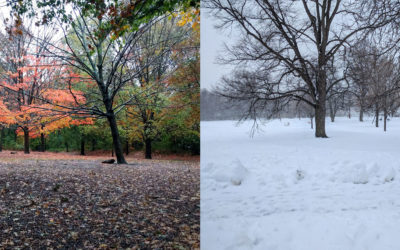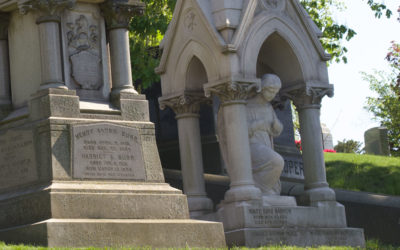The Teaching Life: Why Teaching Matters
The Teaching Life: Why Teaching Matters
By Robert DiYanni, New York University
Preface
If we have been lucky, each of us has had one teacher in our lives who has made all the difference for us. I have been fortunate to have had more than a few. And with half a century of teaching experience myself—grades 8 through graduate school—I have been privileged, on occasion, to have been that teacher for some of my own students. I have seen the spark of joy light up students’ minds and brighten their lives. Seeing those sparks illumine students’ minds and lives has inspired and impelled my teaching life.
Some readers may wonder about the value of what teachers do. Teachers change lives every day. They can alter the trajectory of their students’ lives, and often do.
Some teachers seem born to the art and craft of teaching; most learn the ropes as they go. They learn by going where they have to go. They learn by doing what they have to do. The key to successful teaching is desire—the deep desire to impart knowledge, advance learning, inspire students of all stripes to learn in ways that enhance their lives.
This book is for teachers and aspiring teachers who yearn to make a difference in the lives of others. It’s for anyone who believes that teaching matters, that learning matters, and that teaching well and inspiring others to learn is worth the candle.
Teaching is much more than a job or profession. Teaching is a vocation, a summons to the mysteries and pleasures of learning. In The Teaching Life: Why Teaching Matters, I explore teaching’s rewards and challenges, its prospects and hindrances.
Blending manual, manifesto, and memoir, this book mingles exposition with narrative, description with admonition and exhortation. I anchor my educational experience in research on successful teaching practices, which inform the book unobtrusively. And I describe the many challenges and pleasures the teaching life affords.
I explore these challenges and pleasures and their implications through stories of obstacles encountered, arguments negotiated, mistakes made, tears shed; through stories of the unexpected, the shocking, the amusing, the disruptive, the stupid; stories of elation and frustration, of dedication and betrayal, of anguish and anger; stories of hope and possibility. In the process, I emphasize how teaching and learning are symbiotic, and why they are meaningful only in the context of community.
The Teaching Life transcends my own teaching life; the stories it tells are not my stories alone. And while the book embodies my teaching life, it’s equally a book about the teaching life, about teaching as a way of life.
Whether you are a parent, manager, entrepreneur, coach; a writer, a teacher, or other professional educator—however you make your living in the multiple roles you assume—you will find in The Teaching Life moments of exhilaration, occasional epiphanies, and at least a few ideas of interest and value. You will find reasons to appreciate what teachers contribute to the lives of their students, what they learn from them, and why students and their teachers, at their best, rightfully cherish the precious gifts they impart to each other.
Because all lives matter, I believe it’s critical that we ensure the undereducated are neither marginalized nor neglected. Now more than ever, students’ lives matter; teachers’ lives matter; teaching and learning matter. The life of the mind and the heart matter, desperately, to us all today and tomorrow and beyond.
TABLE OF CONTENTS
“I never teach my pupils; I only attempt to provide the conditions in which they can learn.”
—Albert Einstein
Prologue Early Student Memories
PART ONE CLASSROOM PRACTICES
The whole art of teaching is only the art of awakening the natural curiosity of young minds for the purpose of satisfying it afterwards.—Anatole France
Chapter 1 Learning with High School Students
Chapter 2 Joining Educational Communities
Chapter 3 Settling into the Teaching Life
Chapter 4 Teaching in Cambridge and Taiwan
Chapter 5 Teaching Across Programs
PART TWO TOWARDS MASTERY
The good teacher explains. The superior teacher demonstrates. The great teacher inspires.—William Arthur Ward
Chapter 6 Varied Teaching Venues
Chapter 7 Ways of Teaching
Chapter 8 Teaching Literature
Chapter 9 Teaching and Textbooks
Chapter 10 An Approach to Teaching
Epilogue
Appendix 7 Keys to Teaching and Learning
References and Suggested Readings / Acknowledgments and Recognitions
Prologue
I don’t remember much about my school experiences before the fourth grade, when my teacher Mrs. Grant, a tiny, fire-hydrant-stout, middle-aged woman, made learning enjoyable at Sacred Heart School in Dover, NJ. I remember eagerly anticipating school, excited to enter Mrs. Grant’s classroom, where we were warmly welcomed and vigorously embraced. We were taught the basics of the school curriculum, including religion, from the blue paperback Baltimore Catechism and a little square brown cloth-covered book of bible stories.
At Sacred Heart, I learned to read and compute, to write and discuss, but mostly to listen and complete the assignments in the many workbooks we filled. In the early elementary years, we learned penmanship, the Palmer method. We mastered the cursive alphabet along with its printed cousin, both lower and uppercase letters. I can see those letters still, on green cardboard squares one to a letter in white print and in script; they marched across the front of the fourth-grade classroom above the semi-shiny blackboard, white stalks of chalk nestled beneath them in the grooves of the blackboard’s silver tray.
The nuns who taught in the parochial schools I attended and the lay teachers who worked alongside them, more than anything else, taught us discipline. They tolerated not one iota of nonsense. When a student misbehaved, he (and it was almost always a he), was punished. Hands and faces were slapped; heads were thrust into blackboards with a thud. Incorrigible students were yelled at, their shirtfronts grabbed, ears pinched and pinned back, bottoms smacked with paddles, hands thwacked palms up with wooden rulers, which occasionally broke from the whacking.
The rest of us innocents looked on meekly, knowing with complete certainty that we weren’t going to do anything to bring down the wrath of Sister Mary Clare or the even more fearsome anger of the perpetually frowning Sister Catherine Frances, who opened desk drawers only to slam them shut ferociously, thereby conveying the enormity of her wrath, which could be triggered by the slightest misbehavior. It was teaching through terror. And to a large extent it worked, at least for inducing compliance among the most abject among us.
One of the more pleasant aspects of fifth grade was singing in a boys’ choir conducted by none other than Sister Mary Clare. Music transformed her manner and her temper, dissipating her anger, transmuting it into something almost like serenity. I enjoyed our choir practices that year, especially singing Christmas carols, both sacred and secular, which were broadcast on the local radio station in Dover, New Jersey. One song in particular, the Italian folk carol, Tu scendi dalle stelle (“You Ascend to the Stars”), was a favorite of the parish’s Irish pastor, Father Joseph Delaney. At his urging, it was included in our repertoire. It remains, today, half a century later, one of my favorites, which I’ve played on the mandolin for years, including one time at a teachers’ conference in Sorrento for five hundred plus conferees. This exposure to music in elementary school, coupled with my father’s instruction in mandolin and guitar at home, would come to play an important role in my later educational, professional, and personal life.
Father Delaney also inducted me into the mysteries of Latin, which I learned as an altar boy, also in the fifth grade. Introibo ad altare Dei, he intoned as he began Mass—“I will go unto the altar of God.” And I responded: Ad Deum qui laetificat juventutem meam (“To God, Who gives joy to my youth”). Even though as a ten-year old fifth grader who had not studied Latin formally in school, this liturgical introduction was part of a mysterious rite into which I was being initiated. I liked the sounds of the Latin words, which I learned to pronounce correctly in Church Latin, with its soft consonants—CHEE-che-row rather than KICK-er-row for Cicero’s name, for example. Later I would come to enjoy how James Joyce begins his massive epic novel, Ulysses, with Buck Mulligan parodying the opening of the mass, himself intoning the Latin exchange as he readies himself for a morning shave, lathering up his face with a bristly brush. Beyond the sensuous seductions of Latin, I also liked slipping into my black cassock cinched at the waist with a thin wisp of white rope, a squared off puffy-sleeved surplice topping off the altar boy uniform.
It was the sounds of Latin, though, I loved best, sounds and words I would come to understand more fully when I studied the language semi-seriously in high school and college, useful preparation for my subsequent doctoral language requirements. I passed my Ph.D. Latin exam on the first attempt, having reviewed Wheelock’s Latin grammar and read Latin classics in English translation. Luckily, the passage I had to translate for that Ph.D. exam came from Suetonius’s Lives of the Caesars, which I recognized from having read an English translation a few weeks earlier. And so, my ten-year-old altar boy initiation into Latin provided the start toward my ultimate academic destination, earning a doctoral degree in English Language and Literature twenty years later.
And then there was spelling. Every week in grammar school we learned the spellings and meanings of twenty-five words, nearly all of them new to us. We were tested on the words each week—not only on their spelling, but also on their grammatical and semantic use in sentences that we wrote, one for each word.
We were also required to write a composition in which all twenty-five of those weekly words magically appeared. This demanded some ingenuity, as we had to find thematic patterns that would accommodate many unrelated words. The practice we gained in writing those weekly compositions prepared us well for the regimentation of high school English, where regular writing and continued instruction in grammar were de rigeur. I didn’t realize it then, but the emphasis on grammar and writing (including diagramming sentences) would provide a solid grounding for teaching English, which would come to be both my profession and my passion. In those early schooldays, however, I was not particularly excited by what I was learning in English classes. I was far more concerned with how the New York Yankees and the New York football Giants were doing, along with my beloved Notre Dame football team, whose games I listened to religiously every Saturday afternoon on a little portable plastic radio I carried with me, even on trips to the dentist.
I lived mostly for sports as both spectator and participant. I loved baseball above all, and in high school played as a freshman on the junior varsity and as a sophomore and after on the varsity teams. I pitched and played third base, batting third. I would be sitting in class on a lazy spring afternoon, thinking only about how many minutes remained until the bell would ring and I could dash to the locker room, change into my uniform on a game day, or into practice clothes on others, and begin my real life. Grammar and writing instruction, literary analysis and discussions of books occupied much less of my time and my thinking than did baseball. Even my pleasure reading in high school was mostly about sports: Catcher from Double A, The Kid from Tomkinsville, Mr. Quarterback, End Zone. Paradise Lost, the Aeneid, Dante’s Inferno—great works I would immerse myself in later—were mysteries to me then, something to slog through dutifully rather than read with enjoyment and appreciation.
It wasn’t until college that literature opened new worlds for me. This happened, primarily, in my English classes at Maryknoll Seminary, where I spent the first two and a half years of my college life. I tell some of that story in Chapter Ten, where I describe some influential teachers. My first college roommates had read far more widely and deeply than I had, which disoriented me. And so I decided to do something immediately: to read two books every week, one hundred books a year, something I’ve remained reasonably faithful to for over half a century. But since this is a book less about my student days than my teaching life, I turn now to stories of my classroom teaching experiences, what I learned from them, and why those stories and what I learned from them matter and what they might come to mean and matter for readers like you, as well.
Current Writing Projects
My current writing projects are linked below: (1) a book on reading literature (Improvisations); (2) two books on getting smarter (fast and across the board); (3) a pair of memoirs about my teaching life (50 years+) and my life with music (even more years!). Also included is information about my biggest work-in-progress: an encyclopedic summa pedagogica, with the current title: Provocative Pairs—Learning with the World’s Masters (152 chapters—and counting—each chapter a dozen double-spaced pages, with most chapters devoted to a pair of great masters past and present).
For each of these works in the making, I have provided a table of contents and preface. A couple of them also include a sample chapter. An additional book I have in the works is Poems to Live By, for which I’ve included about a third of what I’ve written so far—also with a brief TOC and prefatory note.
Provocative Pairs—Learning with the Masters
Volume I:
Major Influencers Past and Present
Provocative Pairs—Learning with the Masters
Volume II:
Humanities, Sciences, and More
Simply Smart One
How to Get Smarter Fast
Simply Smart Two
How to Get Smart About Humanities
Simply Smart Three
How to Get Smart About Science and Math
Reading Literature: Improvisations and Explorations
The Teaching Life: Why Teaching Matters
Living with Music: A Glorious Journey
Poems to Live By
Essays: Reflections and Ruminations

Robert DiYanni
Author ⪢ | Professor ⪢ | Consultant ⪢
Robert DiYanni is a professor of humanities at New York University, having served as an instructional consultant at the NYU Center for the Advancement of Teaching and Center for Faculty Advancement. For these centers he conducted workshops and seminars on all aspects of pedagogy, consulted with faculty about teaching concerns, visited and observed classes, and provided a wide range of pedagogical consultative services. Professor DiYanni serves on the faculties of the School of Professional Studies and the Stern School of Business at NYU. He earned his undergraduate degree in English from Rutgers University, attended a Master of Arts in Teaching program at Johns Hopkins University, and received a Ph.D. in English Language and Literature from the City University of New York Graduate Center.
In addition to his work at NYU, Dr. DiYanni has taught at City University of New York, at Pace University, and as a Visiting Professor at Tsing Hua University in Taiwan and at Harvard University. As a high school teacher for four years and a college professor for more than four decades, Professor DiYanni has taught students from eighth grade through doctoral candidates. Most of his teaching, however, has been with college and university undergraduates. His numerous workshops, offered in more than twenty countries, have been attended by secondary school teachers and administrators, as well as by undergraduate college and university faculty and administrators.
Dr. DiYanni has written and edited numerous textbooks, among them, Literature: An Introduction; The Scribner Handbook for Writers (with Pat C. Hoy II); Arts and Culture: An Introduction to the Humanities, (with Janetta Rebold Benton), the basis for a series of lectures given at the Metropolitan Museum of Art; and Modern American Poets: Their Voices and Visions, which served as a companion text for the PBS television series Voices and Vision, which aired in the late 1980s.
You may also want to read these…
Comparing Poems
Comparison is one of the best ways of teaching anything; it is especially useful for reading and teaching…
The Widow of Ephesus
Once there was a certain married woman in the city of Ephesus, whose faithfulness to her husband…
Villanelle Variations
“I learn by going where I have to go,” writes Theodore Roethke in “The Waking.” “The art of losing…


